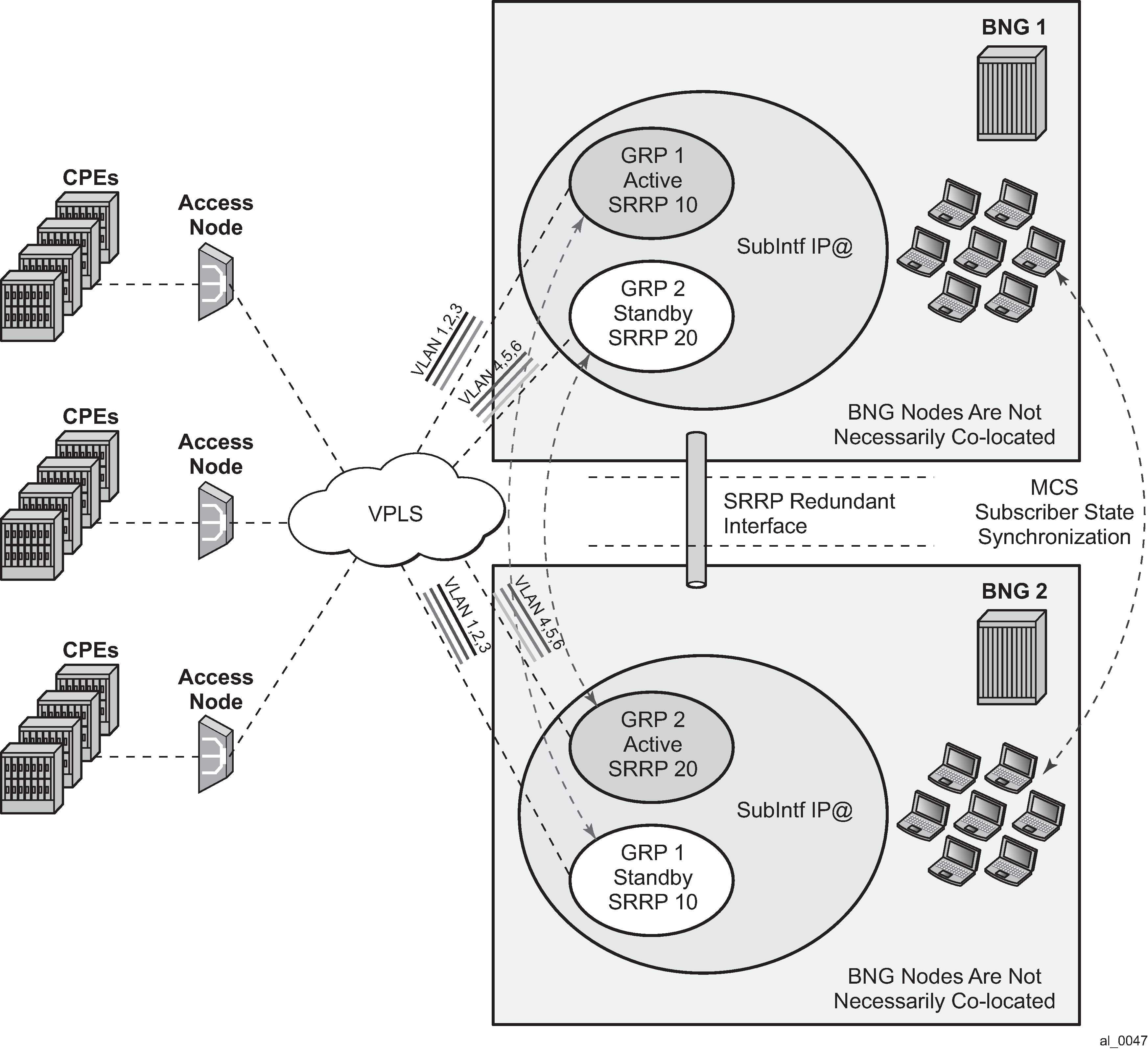The PPPoE multi-chassis synchronization (MCS) model is based on SRRP synchronization and can be used in a centralized or distributed environment with or without Layer 2 aggregation network in-between access nodes and BNGs. The failure detection speed is dependent on SRRP timers. Traffic load can be balanced per SRRP group over the two links. In this model (Figure: Fully redundant ‟stateful 1:1” model), PPPoE states are synchronized between the redundant BNG nodes. If one BNG fails, the newly activated BNG sends out a ‛MAC update’ (gratuitous ARP) message prompting the intermediate Layer 2 nodes to update their forwarding tables so that forwarding can resume. The SRRP timers can be configured in the sub-second range. In reality, the limiting factor for timer values is the scale of the deployment, in particular the number of SRRP groups per node.
